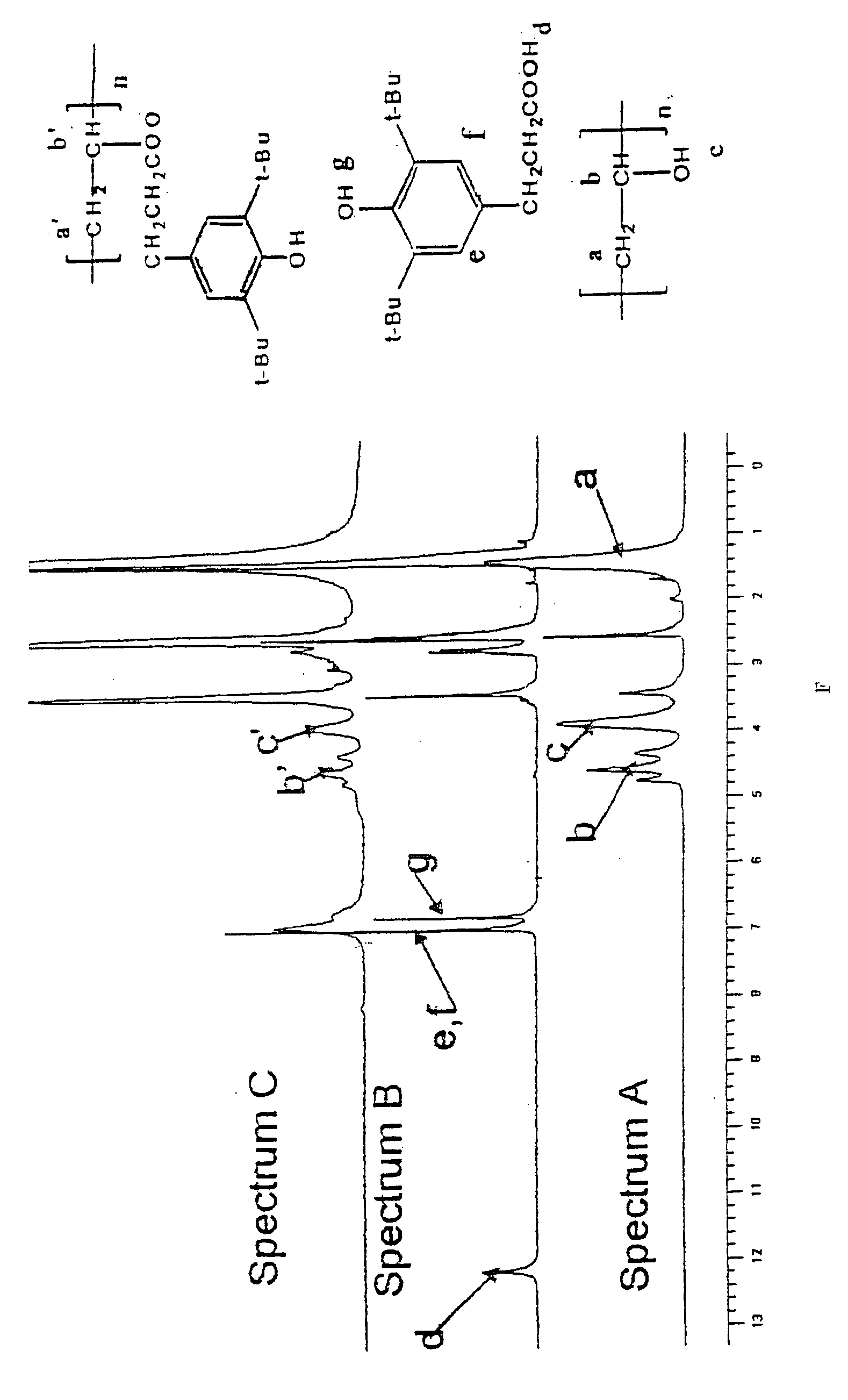Post-coupling synthetic approach for polymeric antioxidants
a synthetic approach and antioxidant technology, applied in the direction of chewing gum, chemical inhibitors, medical preparations, etc., can solve the problems of complex chemical changes in the lipids, lipids susceptible to oxidation, and loss of antioxidant activity of these compounds, and achieve the effect of less toxi
- Summary
- Abstract
- Description
- Claims
- Application Information
AI Technical Summary
Benefits of technology
Problems solved by technology
Method used
Image
Examples
example 1
[0097] 3-(3,5-di-tert-butyl-4-hydroxyphenyl)propionic acid was dissolved in dry dichloromethane (DCM) and oxalyl chloride was added to the solution and was stirred for 1 hour, thereby forming an acid chloride.
[0098] In a separate flask, poly(vinyl alcohol) (PVA) was dissolved in dry dimethyl-formamide (DMF) by heating at 60° C. for 15 minutes. Small amounts of triethylamine and dimethylaminopyridine (DMAP) were added to this solution. The resulting solution was kept in an ice bath and to it was added the solution of the acid chloride over a period of one hour. The reaction was performed under an inert nitrogen atmosphere. After the reaction appeared to be complete, the solution was stirred in the ice bath for an additional 5 hours. The mixture was stirred for another one or two days at room temperature. The solvents were then removed by rotary evaporation to obtain a solid residue. The solid residue was washed first with a 10% sodium bicarbonate solution, followed by a 0.1 M HCl so...
example 2
[0102] Poly(acrylic acid) is reacted with ascorbic acid in the presence of p-toluene sulfonic acid (PTSA) and dicyclohexylcarbodiimide (DCC), thereby attaching the antioxidant to the polymer by an ester linkage.
example 3
[0103] Poly(acrylic acid) is reacted with 3,5-di-tert-butyl-4-hydroxybenzyl alcohol in the presence of DCC and PTSA, thereby attaching the antioxidant to the polymer by an ester linkage.
PUM
| Property | Measurement | Unit |
|---|---|---|
| electrophilic | aaaaa | aaaaa |
| antioxidant | aaaaa | aaaaa |
| acid | aaaaa | aaaaa |
Abstract
Description
Claims
Application Information
 Login to View More
Login to View More - R&D
- Intellectual Property
- Life Sciences
- Materials
- Tech Scout
- Unparalleled Data Quality
- Higher Quality Content
- 60% Fewer Hallucinations
Browse by: Latest US Patents, China's latest patents, Technical Efficacy Thesaurus, Application Domain, Technology Topic, Popular Technical Reports.
© 2025 PatSnap. All rights reserved.Legal|Privacy policy|Modern Slavery Act Transparency Statement|Sitemap|About US| Contact US: help@patsnap.com



